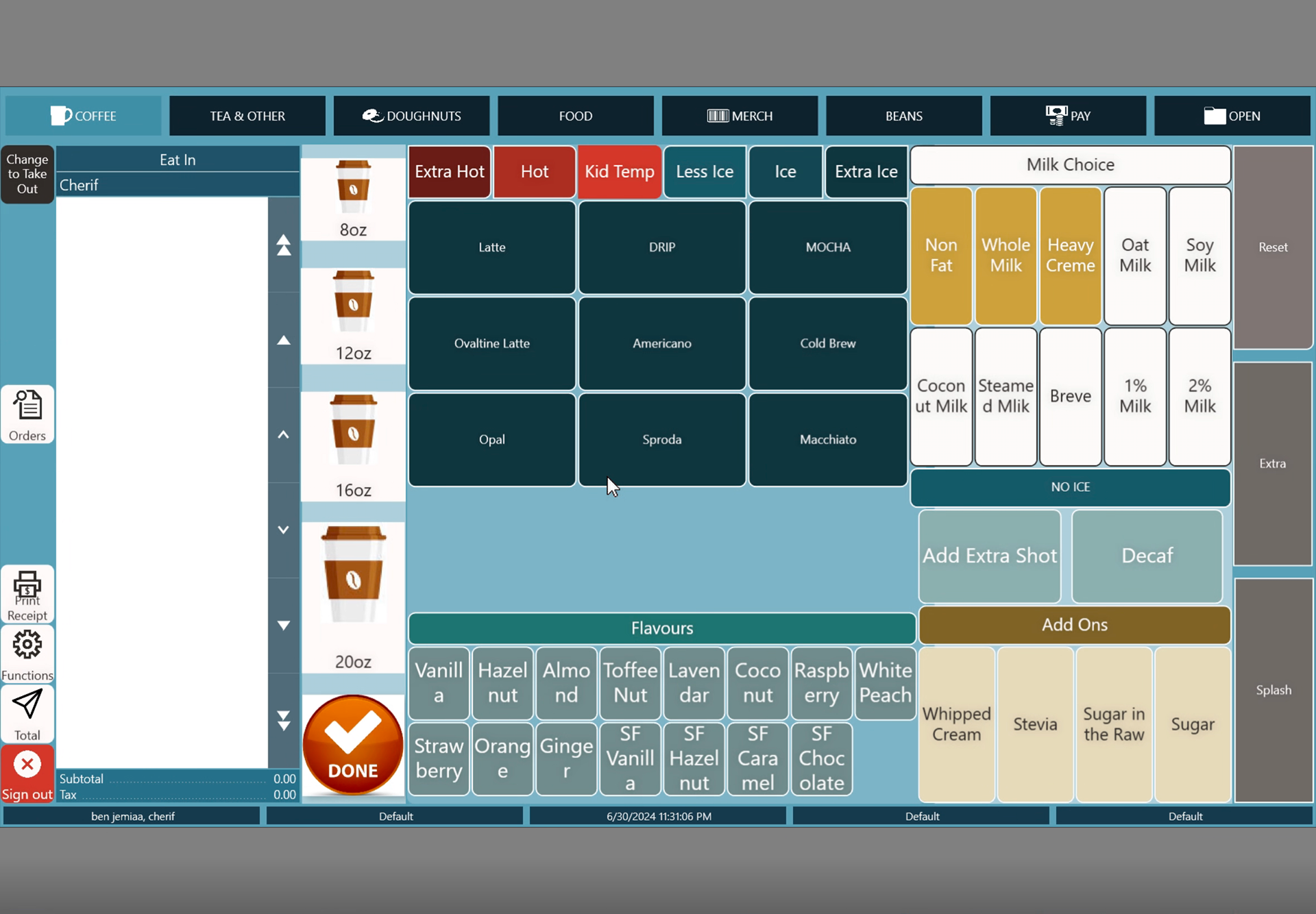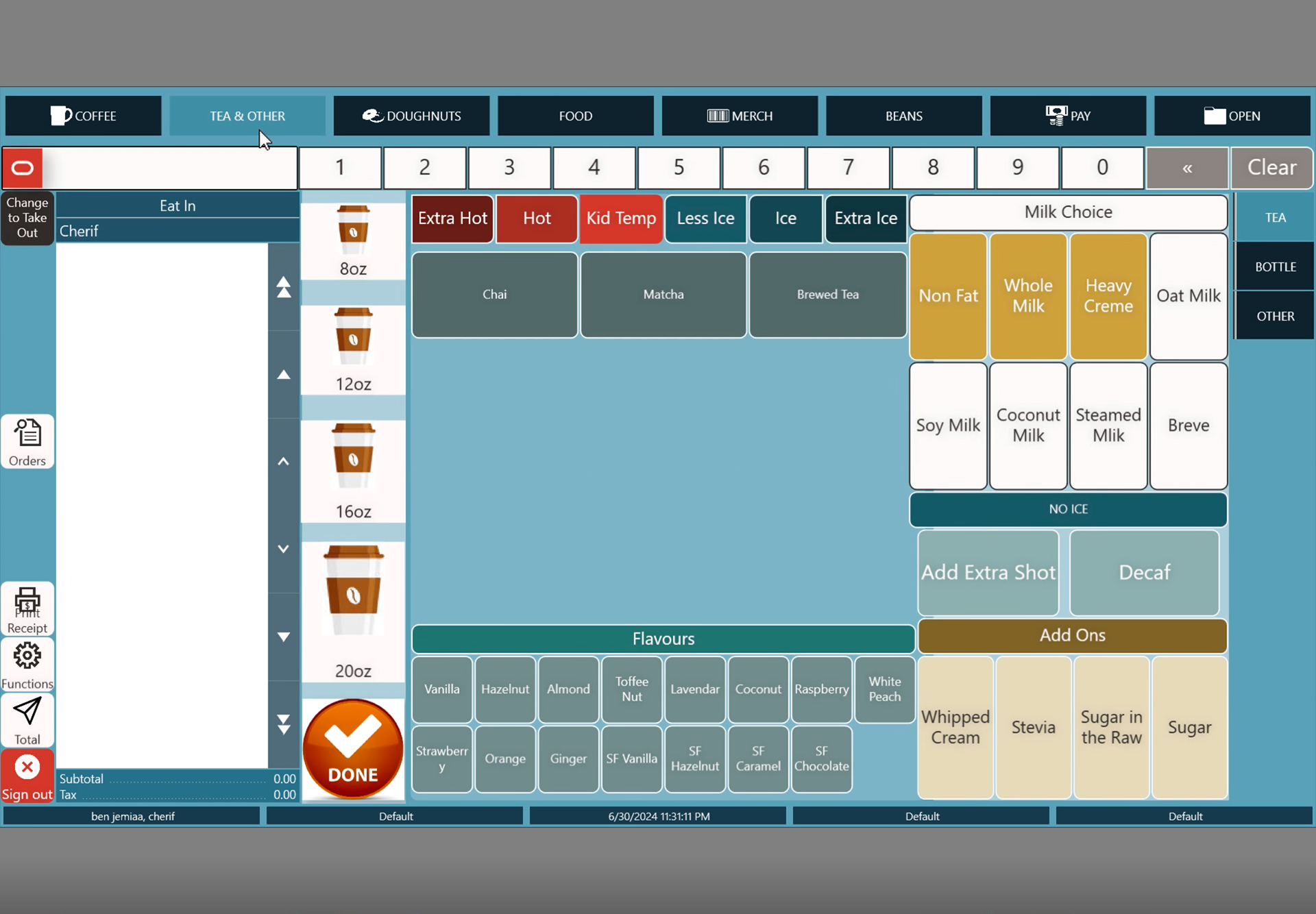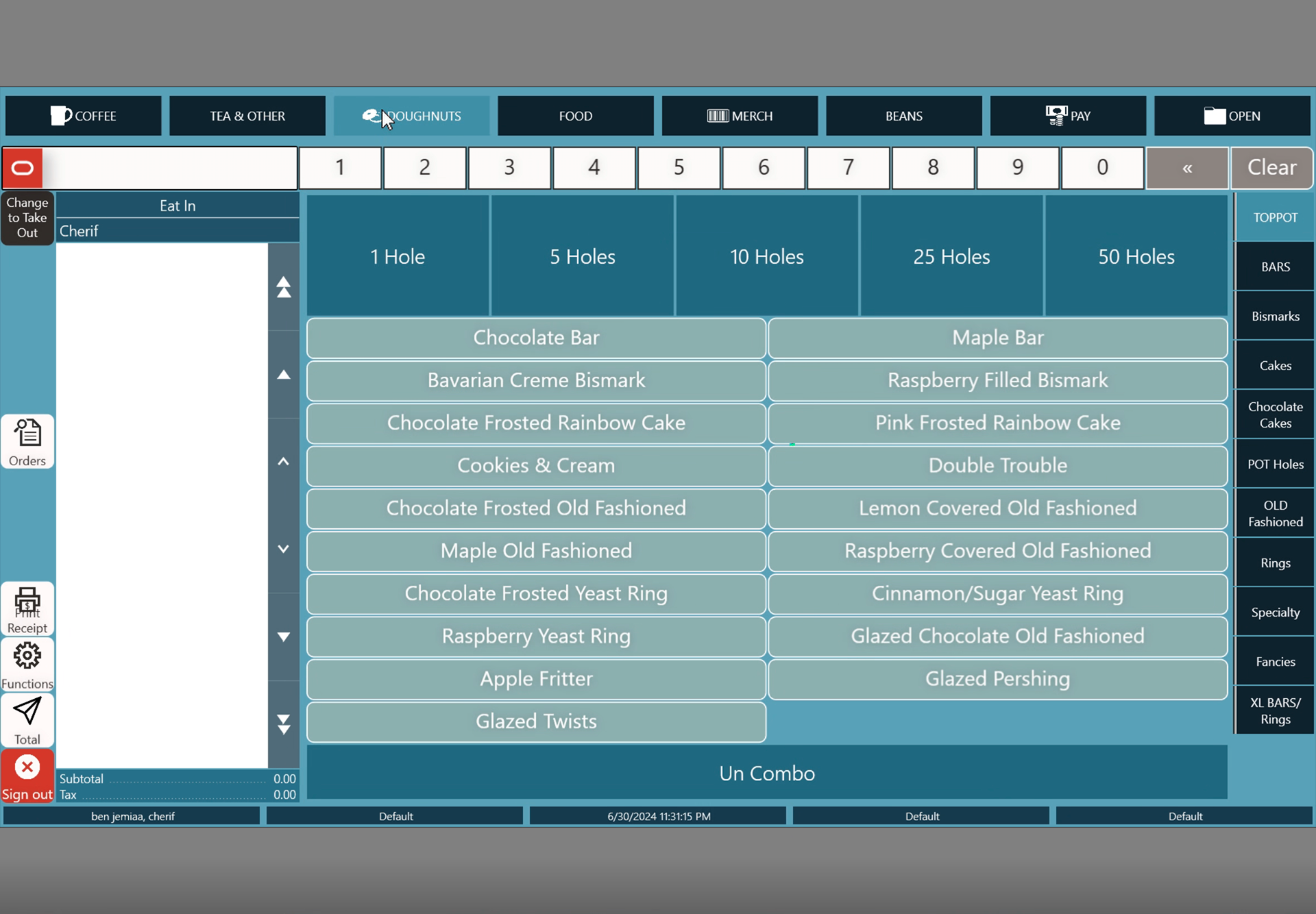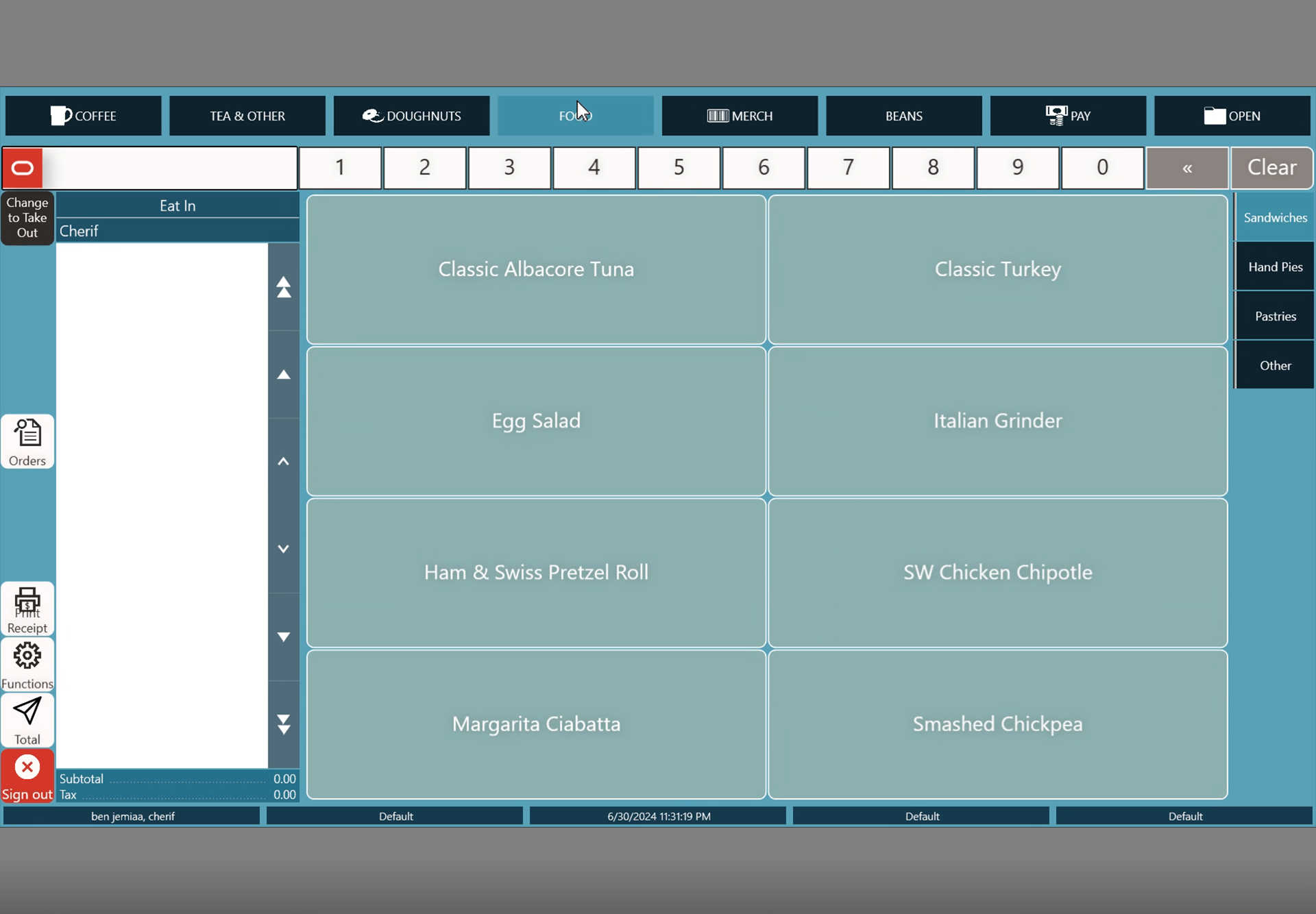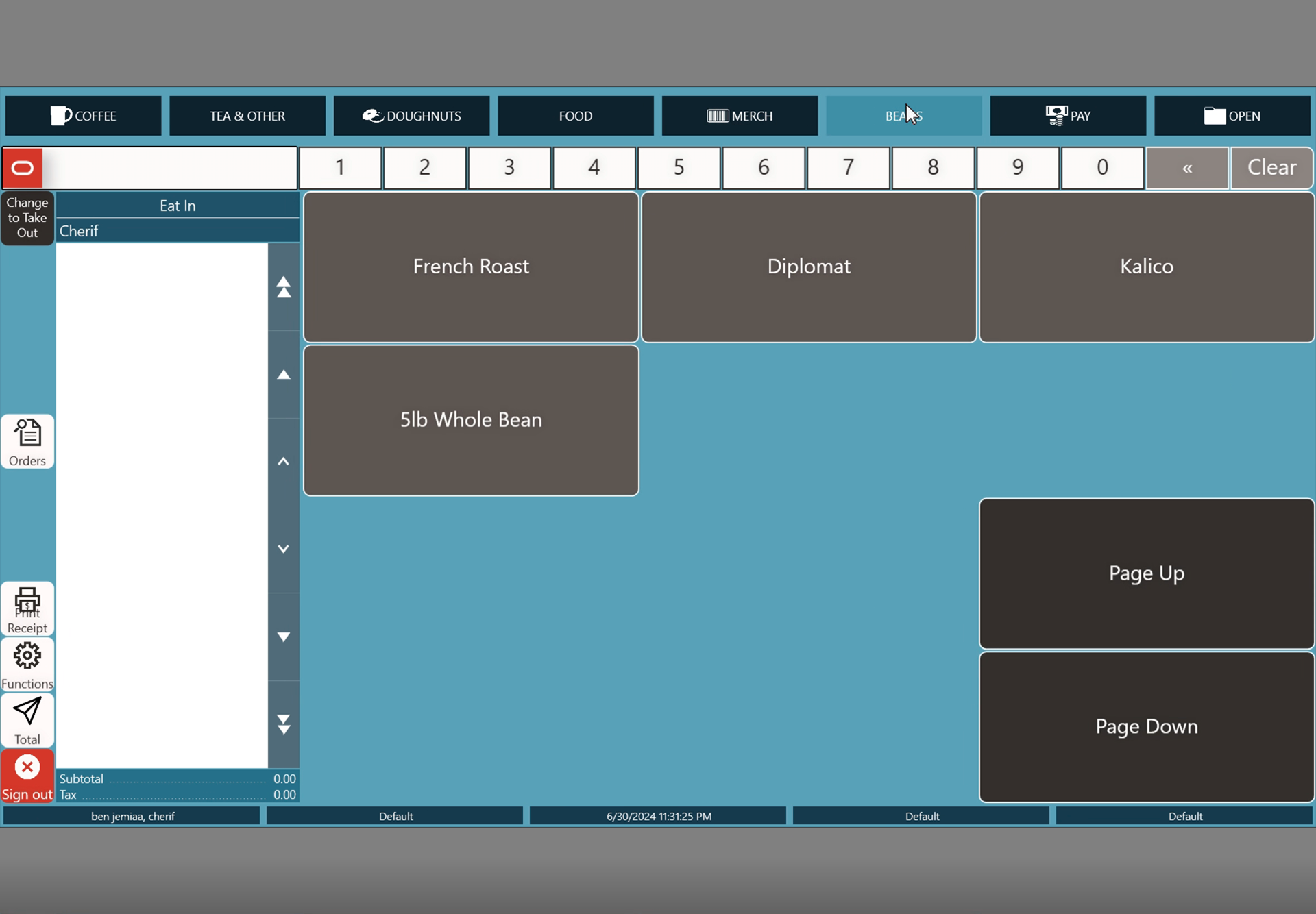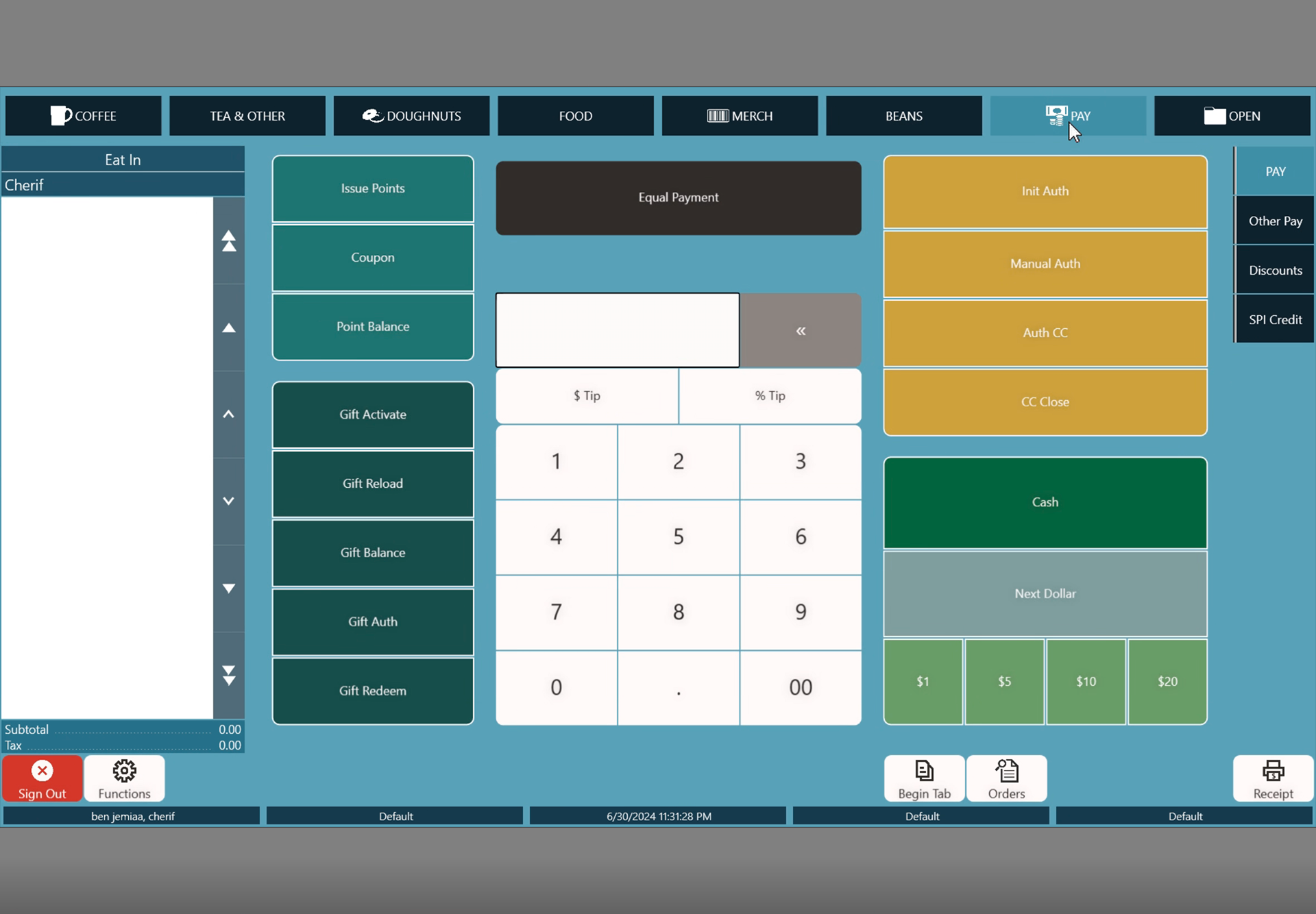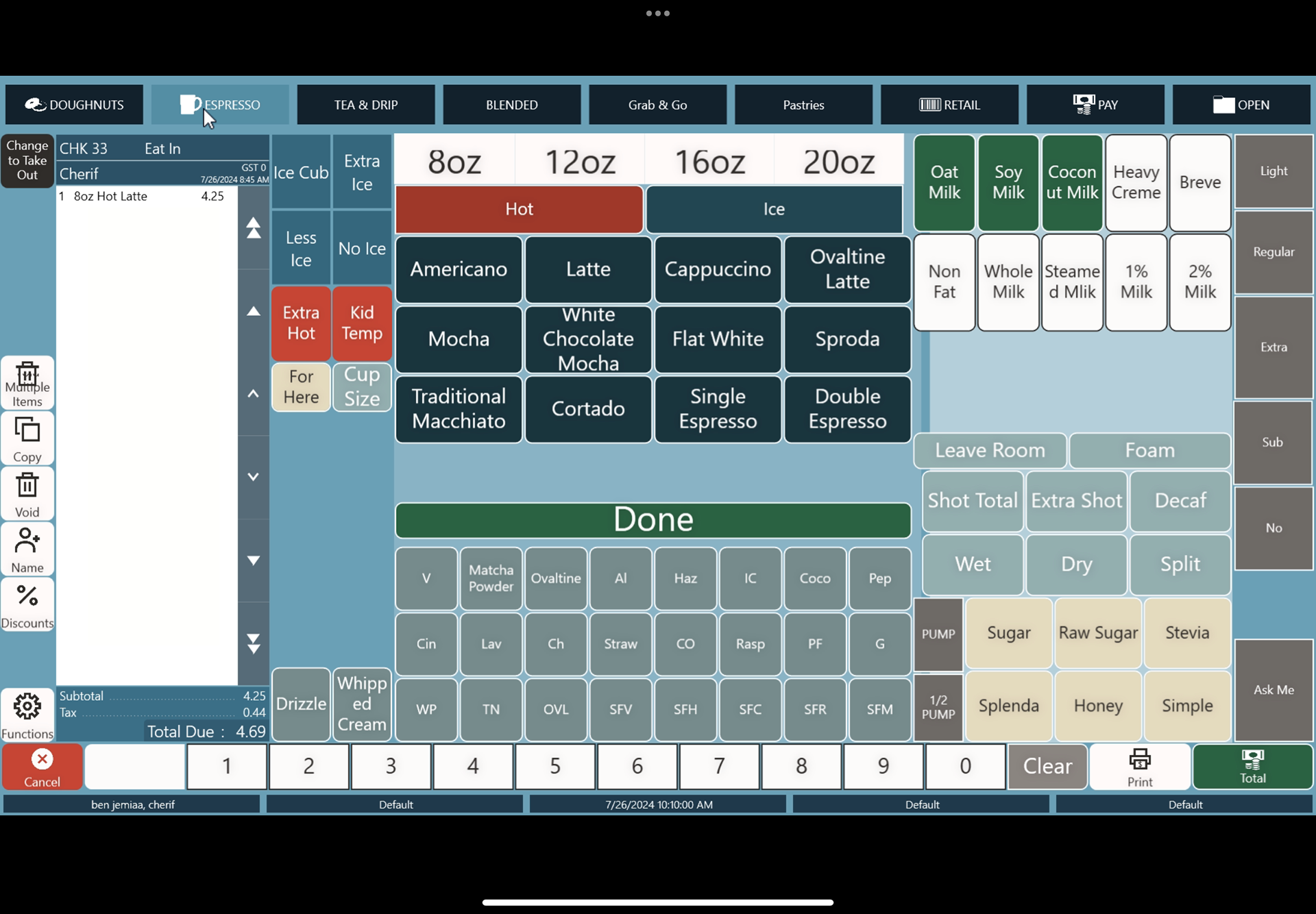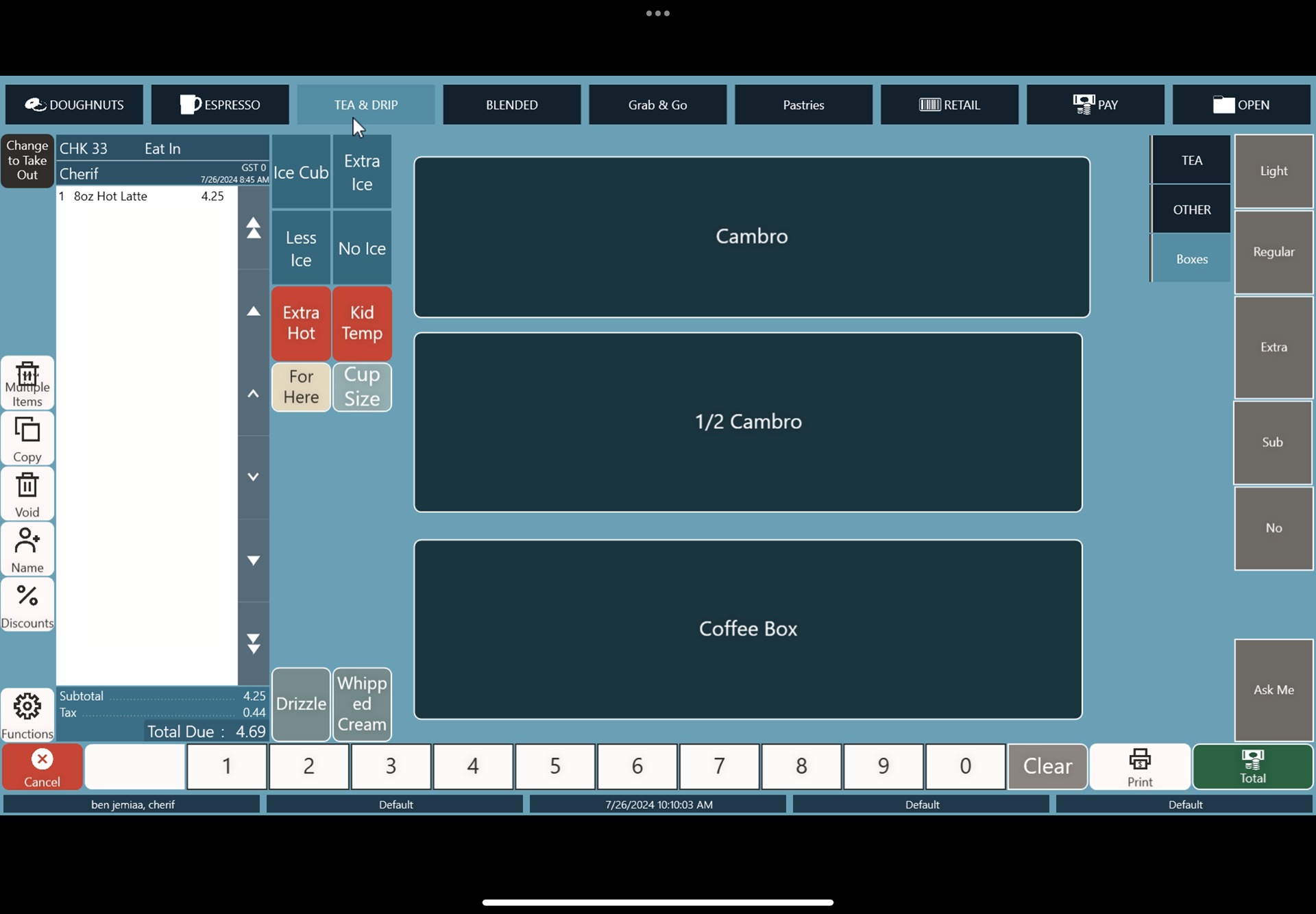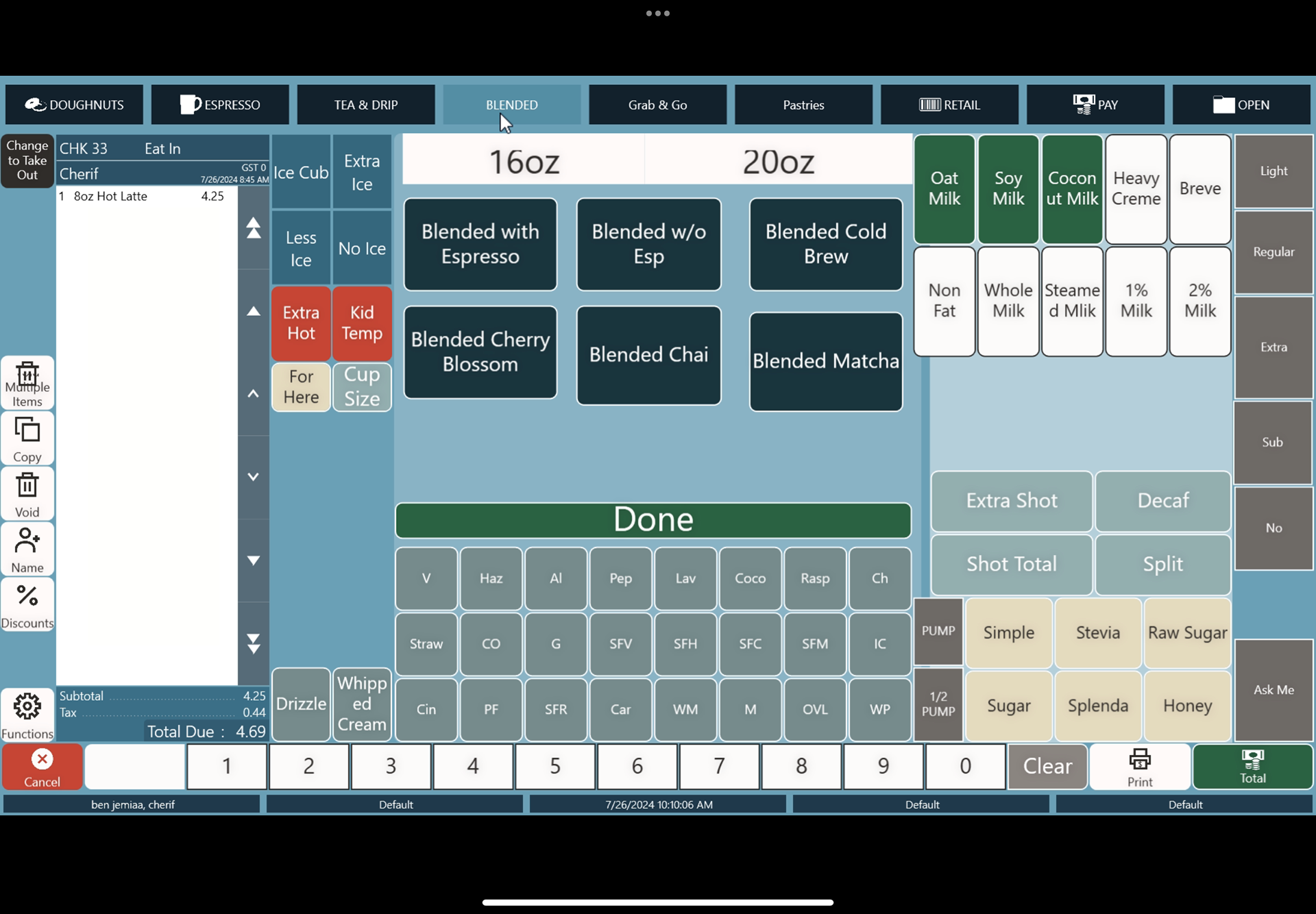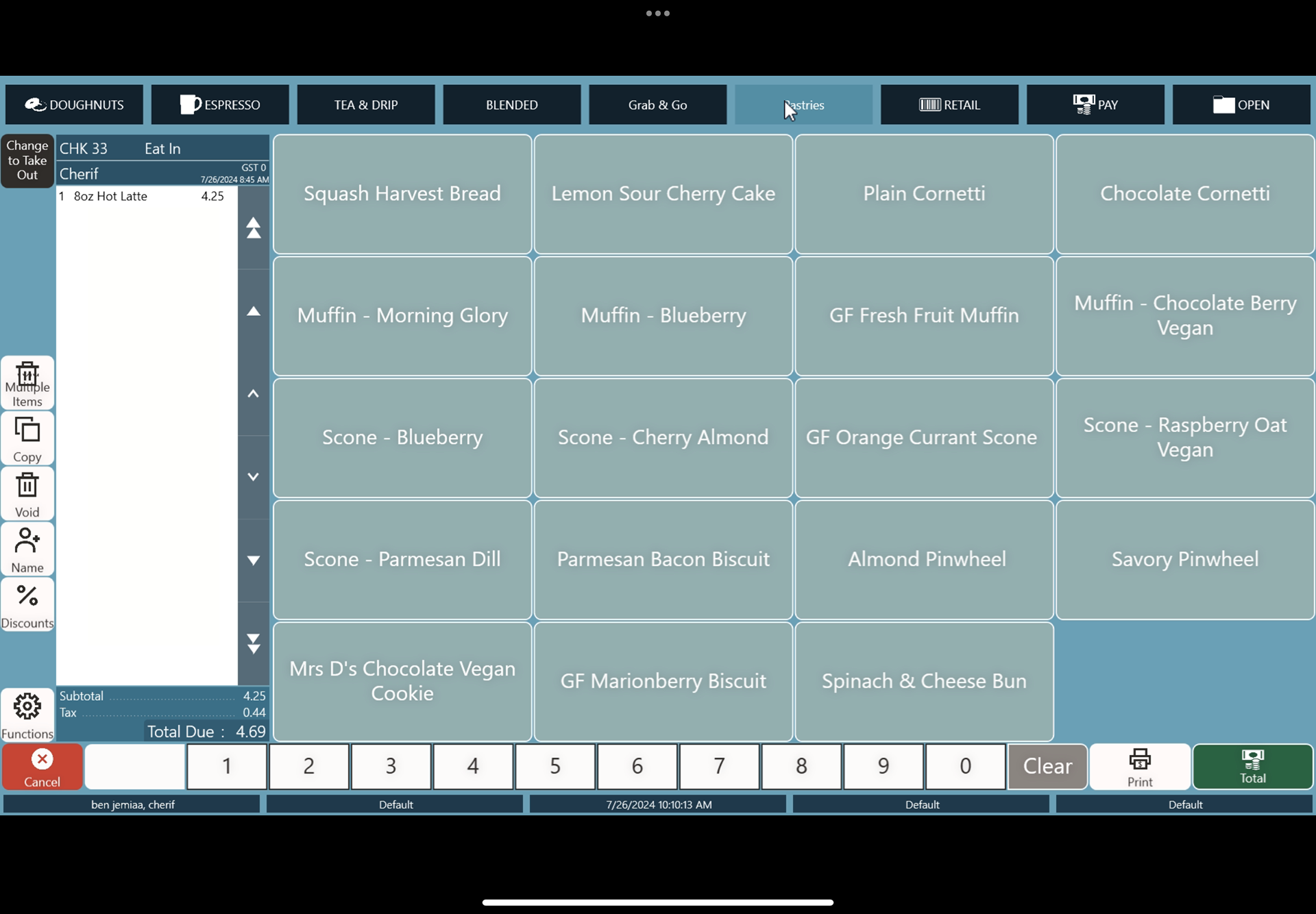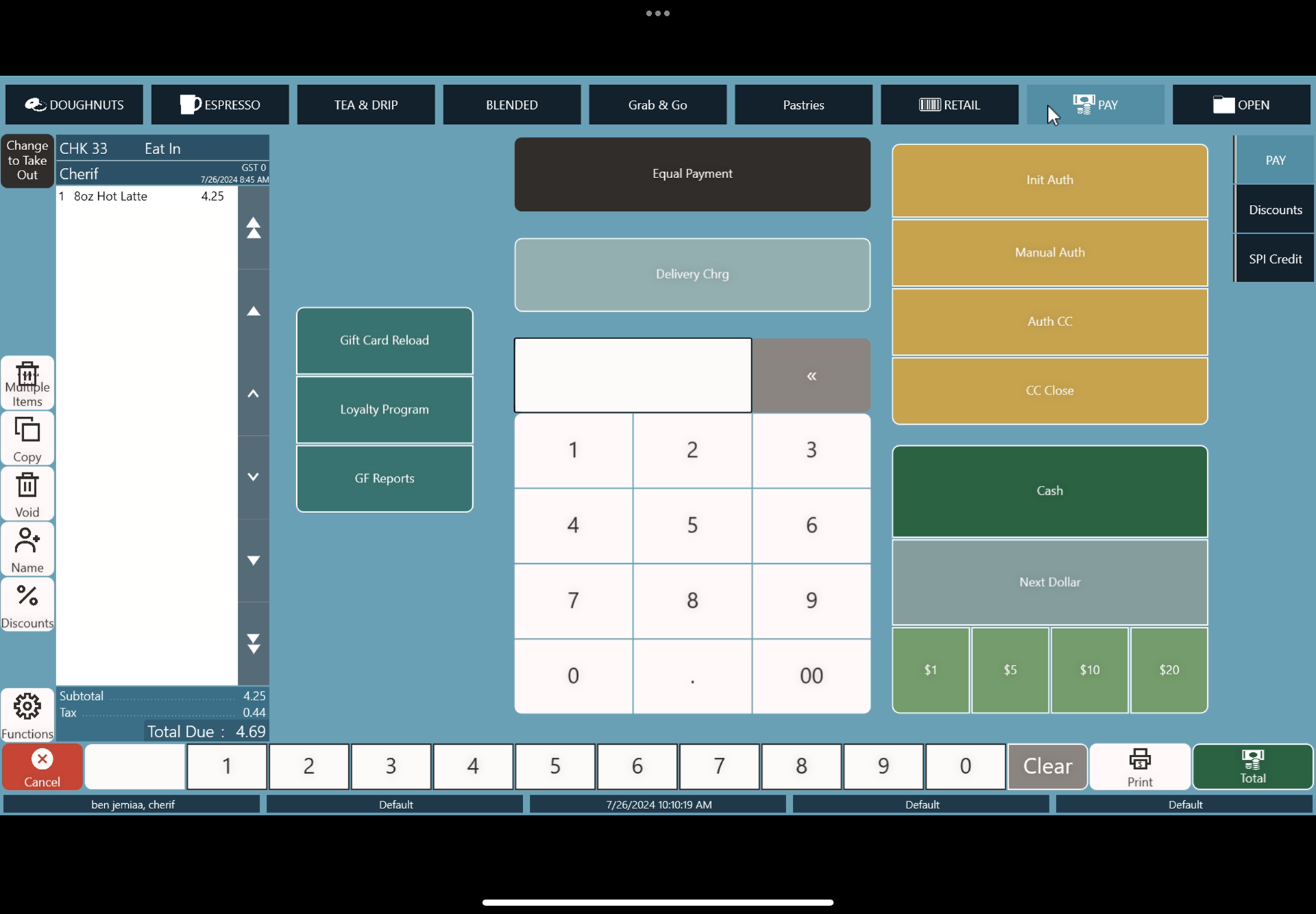Summary: Top Pot Doughnuts implemented a new point-of-sale machine over the summer. My role was to audit the initial version of the POS to ensure it would meet our operational needs and to provide other input to ensure the system was easy for staff to use. An outside contractor was responsible for implementing the changes.
In doing so, I completed the following:
- Documented suggested changes in a Google Sheets file, with categories, detailed descriptions of issues, suggested fixes, and a priority level.
- Created a tree diagram for the information architecture for the POS
- Created a tree test in Optimal Workshop
Result: Customer transaction time decreased by 30% compared to the previous point-of-sale machine, while requiring more data entry from staff members.
Content Audit: To the right is a sample of the spreadsheet I created to document and track desired changes to the POS. I focused on matching existing mental models of the previous POS, preventing errors, and ensuring the system allowed for entries menu items, and customizations.
Top Pot was changing from a system of writing drink orders on cups to having a sticker print with the order on it. This allowed for inventory and data tracking insights but required a shift in practice for baristas. To ensure adherence to the new structure, drinks needed to be (at least) as easy to input as writing them on a cup.
Tree
Diagram
Tree Test: To test our tree diagram, I designed a tree test in Optimal Workshop.
Through stakeholder interviews and usability testing of the existing system, I discovered key pain points in the IA:
- Baristas struggled to locate specific items, especially custom drink options.
- Doughnuts were not categorized intuitively, leading to frequent errors.
- Baristas struggled to locate specific items, especially custom drink options.
- Doughnuts were not categorized intuitively, leading to frequent errors.
While I designed and prepared a comprehensive tree test to validate the proposed information architecture for the POS system, I was unable to send it out for participants to complete due to project timeline restraints.
Despite this, the process of creating the test was invaluable. It allowed me to:
- Fully analyze and restructure the existing IA based on user needs and usability principles.
- Develop realistic task scenarios that reflect the daily challenges baristas face.
- Design a user-centered testing methodology, ensuring that the proposed IA changes could be evaluated effectively if future testing opportunities arose.
- Develop realistic task scenarios that reflect the daily challenges baristas face.
- Design a user-centered testing methodology, ensuring that the proposed IA changes could be evaluated effectively if future testing opportunities arose.
Before Images:
After Images: Due to the technical restraints of Simphony- the POS system of choice, not all suggestions were feasible/implemented.
